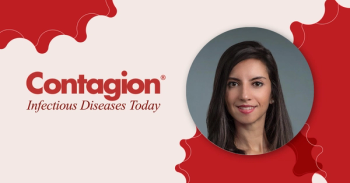
UV Disinfection Tackles MRSA—What About C Diff?
Can UV disinfecting lights tackle health care-associated infections?
Health care environments are dirty. There’s no way of avoiding it — hospitals, urgent care facilities, and other medical centers are constantly battling microorganisms. Cleaning and disinfection are critical in these environments to help reduce the risk of transmission. Consider that
Organisms like MRSA, Candida auris, and Clostridioides difficile, are known to cause diseases in these settings and are often culprits in health care-associated infections. Effectively removing these organisms from the environment is critical for infection control efforts. While disinfecting wipes and sprays have been the go-to for decades, ultraviolet-A (UV-A) light exposure has been growing in popularity. While UV-A is a method for disinfecting surfaces and objects, it can’t sterilize products, but it can help reduce bio-burden in patient rooms, waiting areas, operating rooms, and other high-risk areas. Like many new technologies, UV-A disinfection is still finding its way into hospitals as people become more comfortable with its infection control capabilities.
A
Researchers found that these 4 hours yielded a significant reduction in pathogenic microorganisms from the medical equipment in use and mostly on the disks. There was a modest reduction in MRSA, C auris, and the bacteriophages, but not C diff spores. “C diff spores were not reduced or minimally reduced after 24 hours of exposure to UV-A at 3 W/m2 (0-0.2 log10 CFU reduction),” the authors wrote.
Prior to the use of the UV-A disinfection of the medical equipment, 37% yielded pathogenic microorganisms, while only 10% did after the disinfection, which was statistically significant.
The authors note that these findings suggest the potential for UV-A disinfection to aid in the reduction of pathogenic microorganisms that contribute to health care-associated infections. There should be a concern though for the health and safety of those exposed, which amplifies the importance of manufacturer guidance and proper protocols. Moreover, this component might increase the required cleaning time for certain areas, which should be considered prior to use.
While the UV-A disinfecting light did provide a modest reduction in microorganisms, the resilience of C diff and the existing microbial burden should not be forgotten. UV-A light has shown promise in its capabilities to reduce microorganisms in health care environments; however, it cannot and should not be a substitute for the manual cleaning and disinfection that is required to remove biofilm and other hardier bioburden.
Newsletter
Stay ahead of emerging infectious disease threats with expert insights and breaking research. Subscribe now to get updates delivered straight to your inbox.





















































































































































































































































































